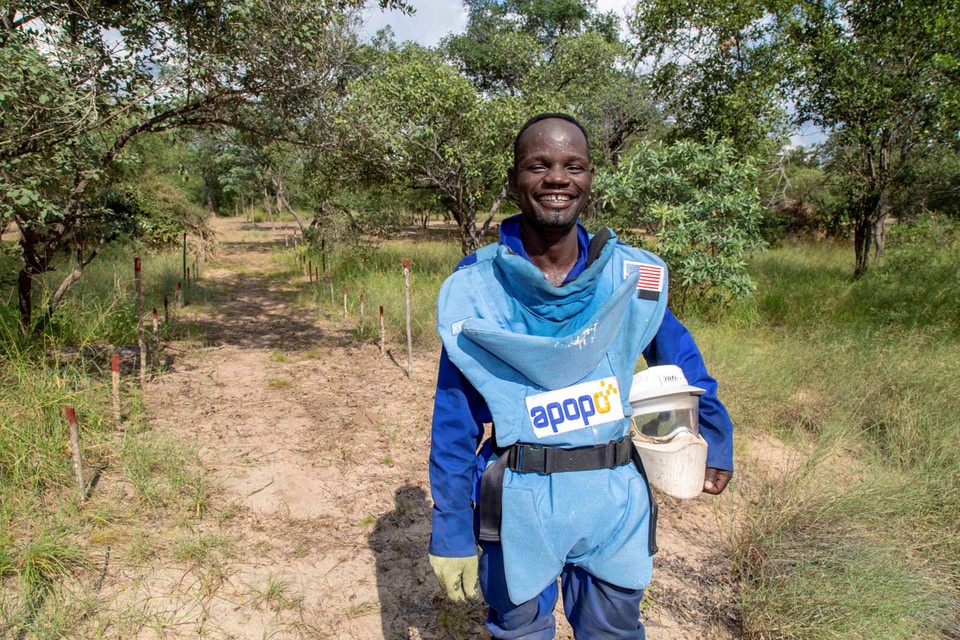Demining for development
Thanks to the continued support of the Swiss Agency for Development and Cooperation (SDC) and U.S. Government, APOPO is now able to strengthen its activities in Zimbabwe, aiming to clear a dense minefield laid over four decades ago in one of the largest conservation areas in the world.
APOPO has been tasked by the Zimbabwean authorities to clear a dense minefield located in the Great Limpopo Transfrontier Park, a bold Southern African vision combining three unique national parks: the Limpopo Park in Mozambique, the Kruger Park in South Africa, and the Gonarezhou Park in Zimbabwe. The Great Limpopo Transfrontier Park is essentially designed to remove all barriers within the area so that locals, wildlife, and tourists can roam freely within this huge ecosystem.
APOPO’s area of responsibility falls within a narrow strip of land known as the Sengwe Wildlife Corridor with Gonarezhou to the north, Kruger and Limpopo to the south. This corridor has a lot of potential for development for local communities through agricultural and livestock farming. However, the presence of deadly landmines hinder access to land. Zimbabwe’s minefields are uniquely dense and complex. In addition to the direct danger of landmines, the communities living close to the Gonarezhou Park face several livelihoods challenges, including inadequate water availability and human-wildlife conflict

Trust Masiya, currently working as an APOPO deminer, has lived most of his life in his hometown of Chilotlela, a village near APOPO’s tasked minefield in south-eastern Zimbabwe, alongside the border with Mozambique. All the way back to his early childhood, Masiya remembers the devastating impact the minefield had on his community. Not only did he see victims of the minefield, but he witnessed how the threat of landmines impeded the farming activities of his family, and killed numerous cattle owned by neighbours devastating the community’s livelihoods. When APOPO came to the area and met with his village to prioritize hiring deminers from the community, he immediately put in an application. While the steady salary and chance to learn new skills were highly motivational, knowing he was helping cattle herders and farmers of his village including his own immediate family was the biggest reason he applied for the job.
It is notably a critical region for the migration of African elephants as well as other endangered wildlife. The presence of landmines causes accidents and is preventing the animals from migrating out of Gonarezhou, leading to overpopulation and human-wildlife conflict in nearby Zimbabwean villages. Removing these weapons will enable conservation authorities to reconnect ecological systems, as well as develop wildlife conservation as a land-use option that not only improve people’s livelihoods but also the wellbeing of wildlife in the area.
APOPO is looking at the long-term impact of mine clearance, seeing mine action as a humanitarian process going further than resolving the contamination issue. It is therefore dedicated to seeing the cleared lands used for development and directly impacting the lives of its beneficiaries, not just for their security, but also for their sustenance. To date APOPO has returned over 1 million square meters of suspected hazardous land and hopes to complete the entire task by 2025.
APOPO plans to further increase its impact in the vulnerable communities living next to the minefields, where poverty and food insecurity have posed a challenge for many years. With stable funding and strong partnerships, APOPO will empower families with access to safe land and the hope that grows from it for a better future.
Photos by David Brazier. APOPO Mine Action Zimbabwe is incredibly grateful to all our dedicated partners and donors.




